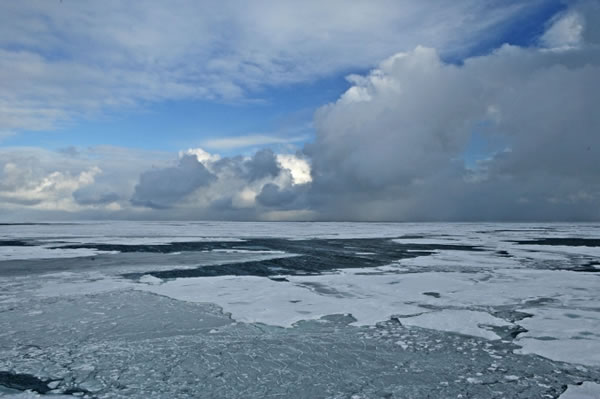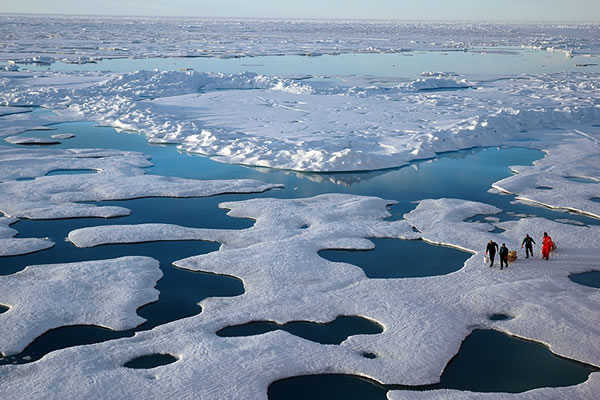Improving sea ice forecasts

Arctic Sea Ice. Credit: NOAA

NOAA scientists explore the Arctic during a 2005 mission. Credit: NOAA
As climate change causes the Arctic ice pack to melt, understanding sea ice patterns is becoming more important as new shipping lanes open in northern waters. The University of Alaska Fairbanks leads the Sea Ice Prediction Network, which was established in 2013.
Hajo Eicken, a geophysicist and sea ice expert at UAF’s Geophysical Institute and International Arctic Research Center, said sea ice in the region is a major hazard and has implications for ecosystems and communities in the Arctic. The Sea Ice Prediction Network brings researchers together to improve sea ice forecasts.
As the planet warms, sea ice is becoming more variable and mobile. Tracking changing ice is difficult. Surface melt water can confuse satellite data interpretation, causing delays of as much as several days in recognizing low-resolution images from space.
The network uses local knowledge from citizen scientists in indigenous communities, as well as input from academic, industry and government experts. The Sea Ice Prediction Network will allow these types of Arctic observations to be more easily coordinated and disseminated widely.
More information:
